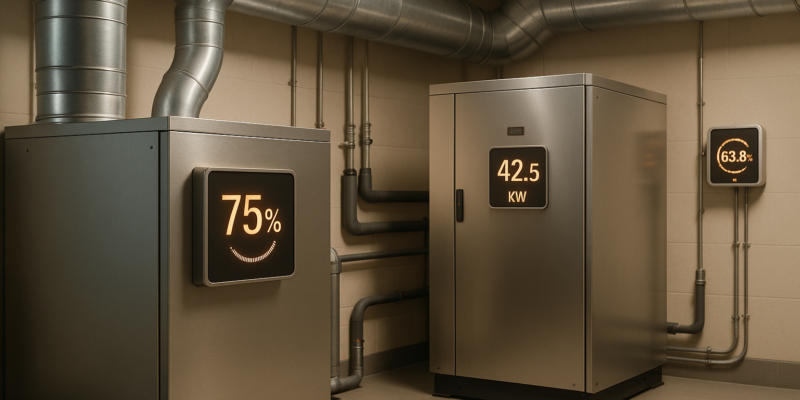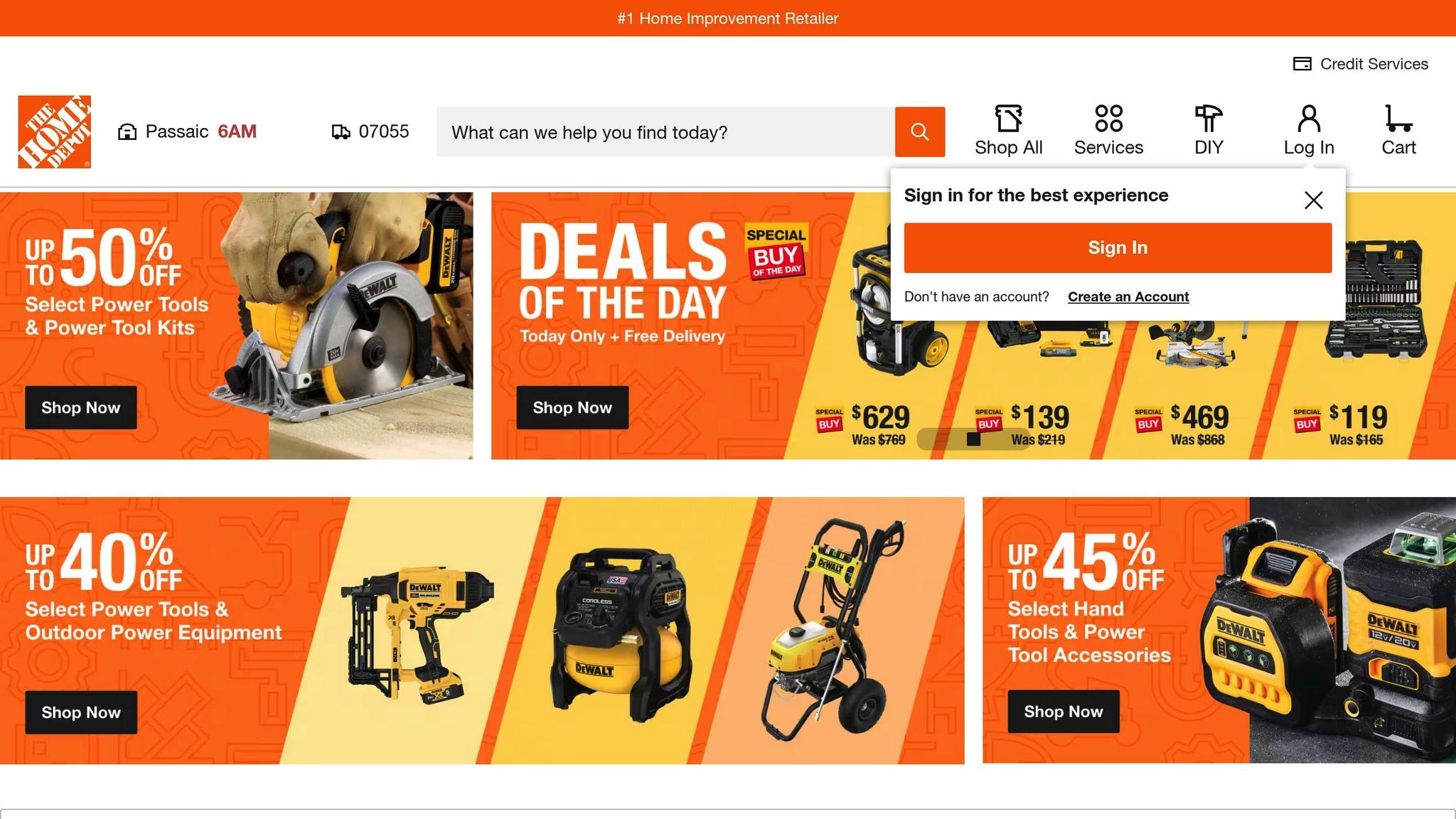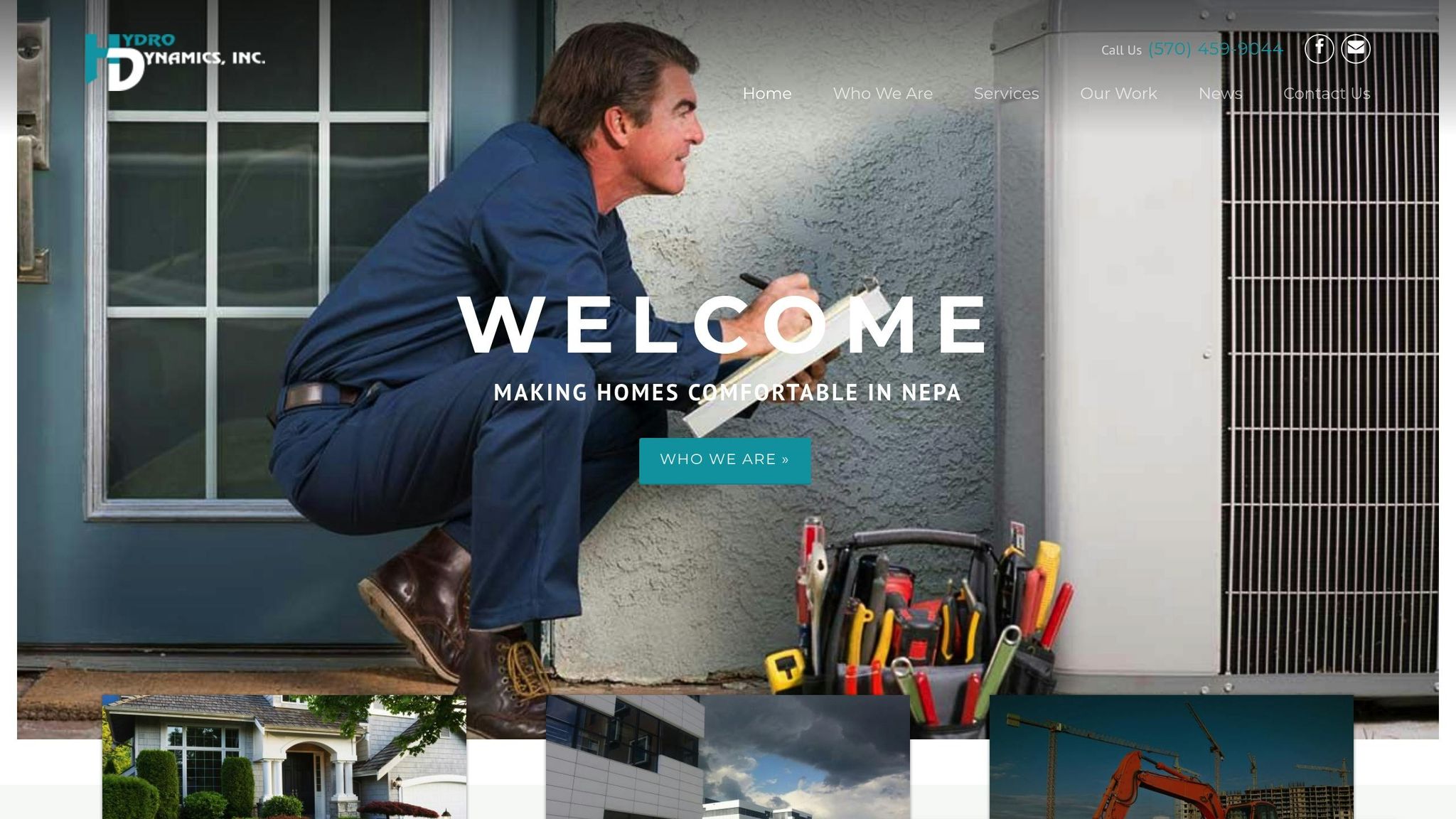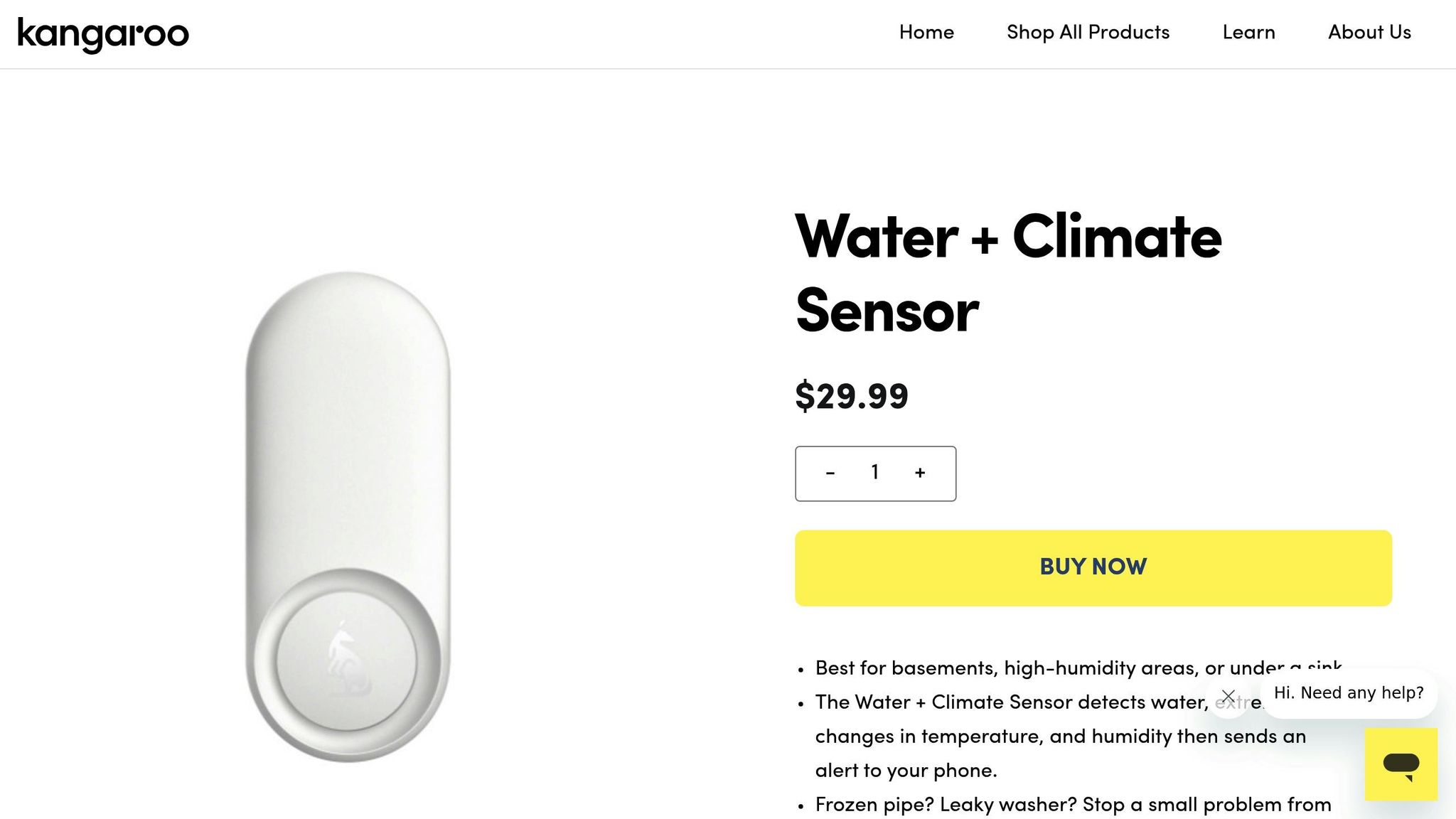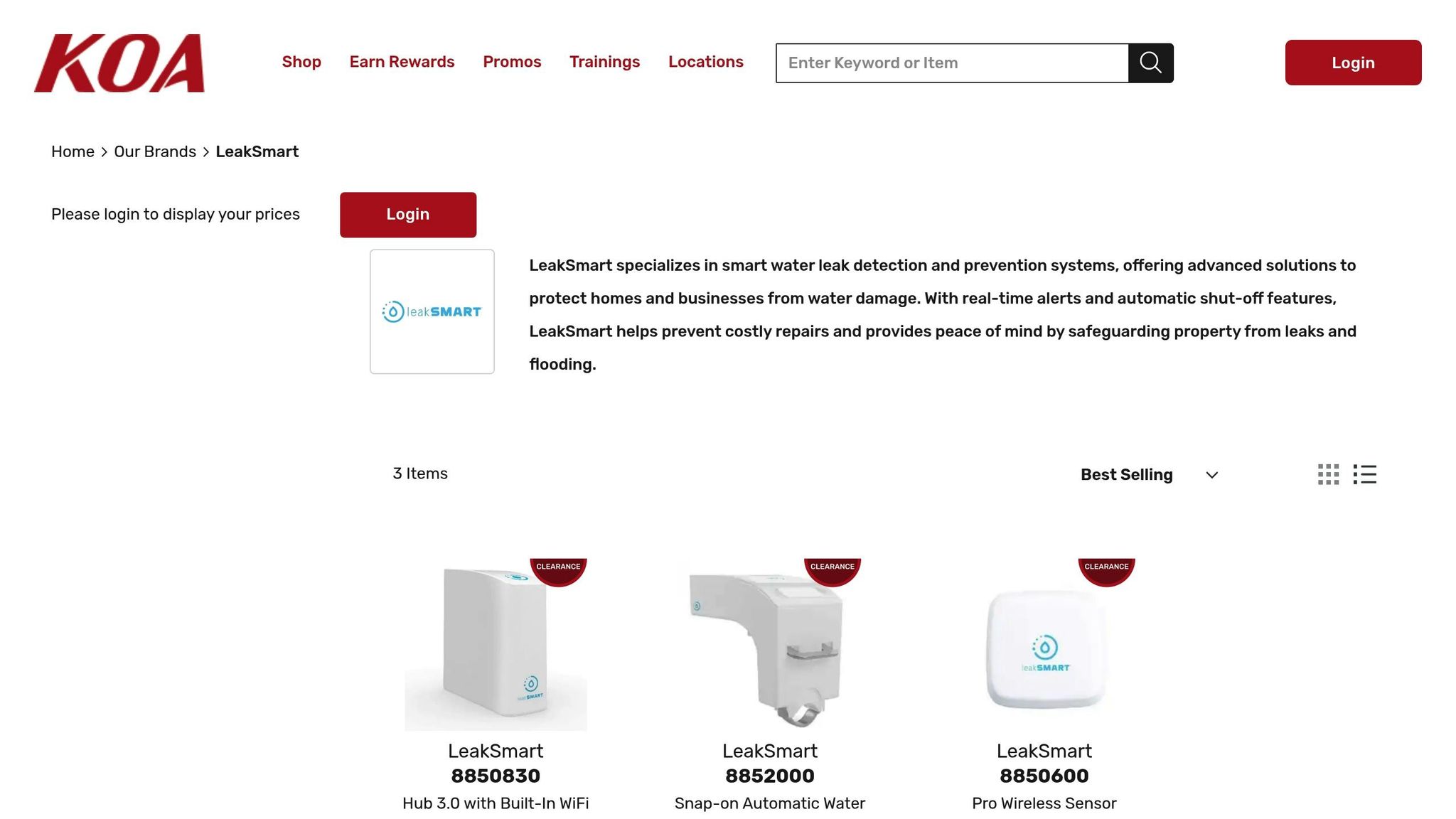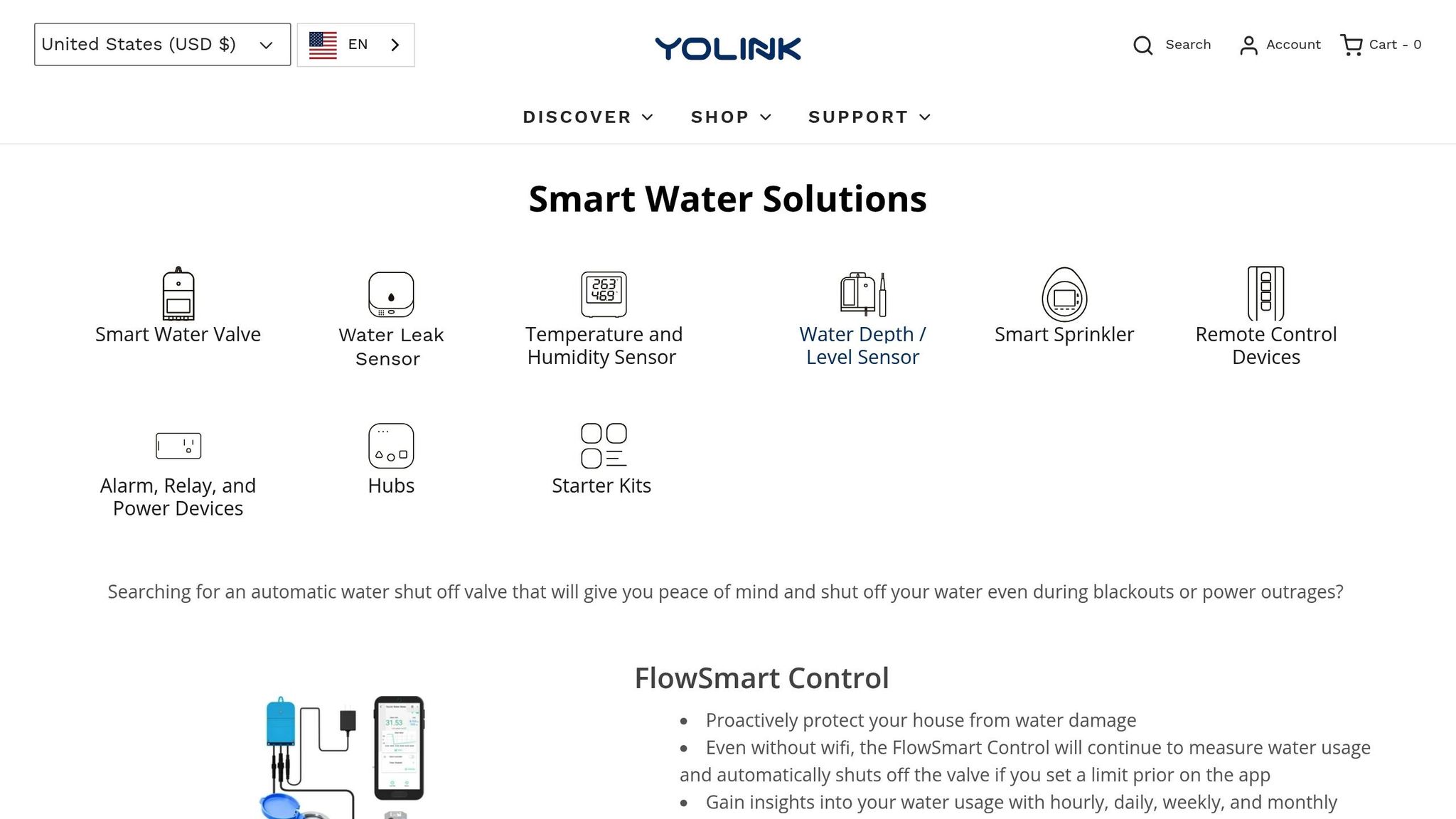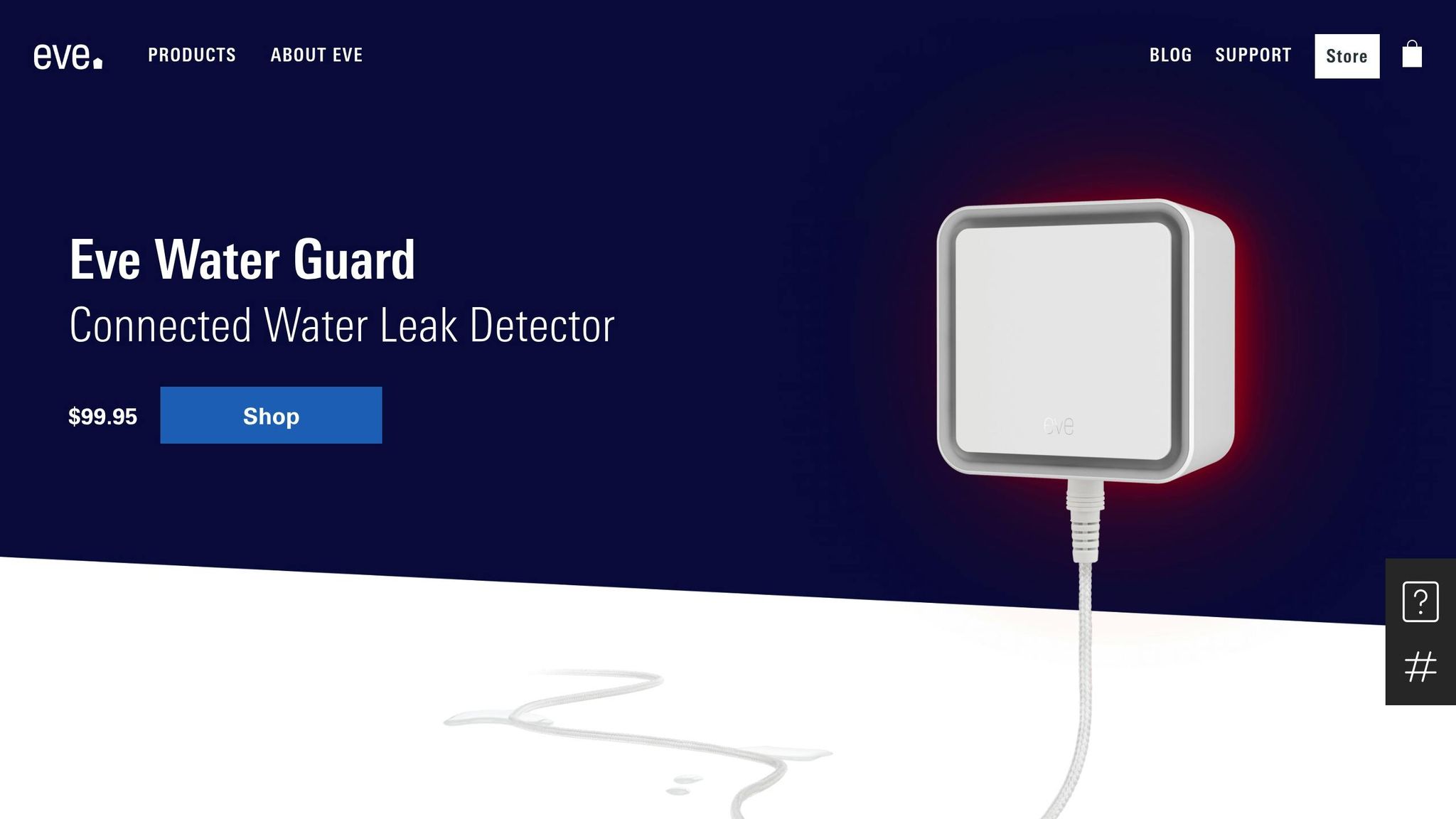DIY vs. Professional Energy Audits: Cost Breakdown
Energy audits identify where your home or business wastes energy, helping reduce utility bills and improve efficiency. You can either do it yourself (DIY) or hire a professional. Here’s a quick summary:
- DIY Energy Audits: Low-cost, using basic tools like caulk, weather stripping, and thermal detectors. They’re great for spotting obvious issues like drafts but often miss hidden problems. Cost: Typically under $100, plus your time.
- Professional Energy Audits: In-depth evaluations using advanced tools like blower doors and infrared cameras. They identify hard-to-detect inefficiencies and provide detailed recommendations. Cost: $100–$1,650 (average $416), with potential rebates.
Key Takeaways:
- DIY is a budget-friendly starting point for minor fixes.
- Professional audits offer precise insights and can cut energy bills by 5%–30%, often paying for themselves within a year.
- Government incentives, like a 30% tax credit (up to $150), are available for professional audits through 2025.
Choosing between the two depends on your budget, property size, and energy-saving goals.
What Energy Audits Are and Why You Need Them
Energy Audit Basics
An energy audit is all about evaluating how efficiently your building uses energy and identifying where it’s being wasted. Think of it as a check-up for your property’s energy health, helping you figure out where your money is going when it comes to energy bills.
“An energy audit is an inspection survey and an analysis of energy flows for energy conservation in a building.” – Wikipedia
During an audit, either a professional or a homeowner inspects the property to uncover issues. This could mean noticing air leaks around aging windows, finding gaps in insulation, or realizing that your HVAC system is working overtime.
But it’s not just about identifying problems. Energy audits provide clear, actionable recommendations tailored to your specific building. These could include adding better insulation, upgrading outdated wiring, installing energy-efficient lighting, or replacing an overworked HVAC system.
In many ways, an energy audit is your starting point for making smart energy-saving choices. Instead of guessing where to invest your time and money, an audit gives you a detailed roadmap to maximize the impact of your efforts.
Why Energy Audits Matter
The benefits of energy audits go far beyond just trimming your utility bills – though that alone is a pretty compelling reason. Homeowners who follow through on audit recommendations can cut their energy use by 10% to 30%, which translates to savings of 5% to 30% on monthly energy costs. For businesses, the potential savings can climb as high as 30%.
“A home energy audit helps you identify areas where your home wastes energy, offering valuable tips to improve efficiency, lower bills, and boost comfort.” – Bianca Phillips, GoodLeap
Comfort is another big win. By tackling issues like drafts or uneven temperatures, energy audits can eliminate the frustration of that one room that’s always freezing in winter or sweltering in summer. Plus, they can address ventilation problems that might lead to mold, protecting both your property and your health.
Then there’s the environmental angle. Making energy-efficient changes in commercial buildings can cut greenhouse gas emissions by up to 30%. Every kilowatt-hour saved means a smaller carbon footprint.
“Energy audits are powerful tools for identifying opportunities to reduce electricity costs in residential and commercial settings.” – Zimmerman Electric Company
If that’s not incentive enough, the government sweetens the deal. Thanks to the Inflation Reduction Act, you can claim 30% of your energy audit’s cost – up to $150 – as a tax credit. But don’t wait too long; this credit expires at the end of 2025.
Finally, energy audits can even boost your property’s value. Energy-efficient upgrades identified during an audit can make your home or business more attractive to buyers. And when you implement the recommended changes, you might qualify for even more tax credits and rebates.
Up next, we’ll dive into the costs and considerations of tackling an energy audit yourself versus hiring a professional.
DIY Energy Audits: What They Cost and Where They Fall Short
How to Do Your Own Energy Audit
Conducting a DIY energy audit involves evaluating your home’s energy use with basic household tools. This includes tasks like checking for air leaks, inspecting insulation, and examining your HVAC system for inefficiencies.
Start by tackling the basics. For example, you can use an incense stick to detect drafts around windows and doors – just watch how the smoke moves to pinpoint problem areas. Go room by room, looking for gaps around window frames, worn-out weatherstripping, or drafts near electrical outlets. These small steps can reveal areas where energy is escaping.
Pay special attention to spots where energy loss is common. Check insulation in the attic, basement, and crawl spaces. Inspect your HVAC system for disconnected ducts or clogged filters. Don’t overlook your water heater – if it’s running too hot, it might benefit from an insulating jacket.
Some tasks, like working in the attic or repairing chimneys, might be beyond your skill level. In these cases, it’s wise to call in a professional. This initial DIY effort gives you a clearer picture of your home’s energy efficiency, but it’s just the first step.
DIY Energy Audit Expenses
Once you’ve identified problem areas, you’ll need a few tools and materials to fix them. While your time is free, here’s what you might spend to get started:
Detection and Monitoring Tools:
- A Kill A Watt detector costs $22 and measures appliance energy use.
- The Black & Decker TLD100 infrared thermal leak detector, priced at $49.99, helps spot temperature differences and air leaks.
- Smart plugs and relays can monitor energy usage for various devices in your home.
Sealing Materials:
- Caulk and weatherstripping are essential for sealing air leaks around windows and doors.
- The Easy-Stop Weather-Stripping System is $74 per window, while foam gaskets for outlets cost just $0.10 each.
- For fireplaces, a Draftstopper runs about $55.
HVAC Improvements:
- Water-based mastic sealant and HVAC foil tape can patch ductwork issues.
- Water heater insulating jackets cost between $10 and $20, and similar insulating blankets are available for older tank-style water heaters.
- Sweep seals for exterior doors help block drafts from underneath.
Additional costs might include a fireplace sweep service, which ranges from $90 to $200, or a replacement refrigerator gasket, priced between $60 and $90.
“With a little knowledge and determination, you might be surprised by your next power bill.”
- Jeffrey Gordon, spokesperson for the New York State Energy Research Development Authority
Where DIY Audits Come Up Short
DIY energy audits are a great starting point, but they have their limitations. While they can help you identify obvious issues, they often miss more complex problems that require specialized tools and expertise. For example, professional energy auditors use advanced equipment like blower doors, infrared cameras, and combustion analyzers – tools that most homeowners simply don’t have access to.
The U.S. Department of Energy highlights this gap:
“A ‘do-it-yourself’ home energy audit will not be as thorough as a professional home energy assessment.”
DIY efforts might also lead to costly mistakes. For instance, you could spend a fortune on new windows when better insulation would have solved the problem. On the flip side, over-sealing your home could create indoor air quality issues that require expensive fixes.
Another challenge is expertise. Professional energy auditors have the training to spot problems that a DIYer might overlook. They also provide specific, actionable recommendations instead of generalized advice. While professional audits involve upfront costs, they can reduce energy bills by 5% to 30% annually by pinpointing the most effective solutions.
Without tools like infrared cameras or blower doors, DIY audits often miss hidden insulation gaps, duct leaks, and even safety hazards. Professionals bring a level of precision that ensures you’re investing in fixes that deliver the most impact, rather than guessing at solutions that might not address the root issues.
Professional Energy Audits: Costs and What You Get
What Professional Energy Audits Include
Professional energy audits bring in specialized tools that most homeowners don’t have access to – think blower door tests, infrared cameras, and surface thermometers. These tools allow for a deep dive into your home’s energy efficiency.
The process starts with a blower door test, which pinpoints hidden air leaks that DIY methods often overlook. From there, the auditor evaluates your entire home, including the building envelope, HVAC systems, insulation, and even appliance efficiency. Once the inspection is complete, you’ll receive a detailed report outlining specific recommendations to improve energy efficiency and cut costs.
“Choose a provider that’s actually going to do an energy audit – not just show up and put [in] insulation. They’re actually going to pressure test the house and they’re going to certify the results.” – Greg Fasullo, Home Energy Expert, Elevation
Professional Energy Audit Pricing
The cost of a professional energy audit typically ranges from $212 to $698, with a national average of $437. However, prices vary based on factors like location, home size, and the type of audit you choose. For example, here’s a snapshot of pricing by city:
- New York, NY: $800
- Denver, CO: $275
- Austin, TX: $700
- Boston, MA: $550
- Miami, FL: $750
- San Francisco, CA: $300
- Chicago, IL: $450
The type of audit also plays a role in pricing. An ASHRAE Level 1 (Walk-Through Audit) costs between $150 and $200 for a typical 1,800-square-foot home. A more in-depth Level 2 (Energy Survey and Analysis) ranges from $200 to $650, while the comprehensive Level 3 (Detailed Analysis and Improvements) runs between $650 and $900. On average, costs per square foot fall between $0.08 and $0.50, depending on your home’s complexity and local market rates.
Financial incentives can help offset these costs. For instance, the 2022 Inflation Reduction Act’s Energy Efficient Home Improvement Credit covers up to $150 for home energy audits. Many utility companies also offer rebates or even free audits to their customers.
Why Professional Audits Pay Off
Investing in a professional energy audit can lead to noticeable savings. Homeowners can reduce energy bills by 5%–30%. Most people recover the cost of the audit within 6 to 12 months, with savings continuing to add up over time. Since heating and cooling often make up as much as 50% of your energy bill, even small improvements can have a big impact.
The advanced tools used in these audits reveal inefficiencies that are impossible to detect without professional help. This ensures that your money goes toward fixes that make the most difference, rather than relying on guesswork. Audits also provide a prioritized plan for upgrades, focusing on the most cost-effective changes.
“A professional assessment provides a roadmap to cost savings and enhanced comfort.” – U.S. Department of Energy
Beyond energy savings, there’s a boost to property value. Energy-efficient homes are becoming increasingly attractive in the real estate market. Professional audits not only help you save money but also reduce wasted energy and suggest eco-friendly solutions. Interestingly, while only 9% of surveyed homeowners had undergone an energy audit, those who did gained access to expert advice that goes far beyond basic weatherproofing.
Side-by-Side Cost Comparison: DIY vs. Professional
DIY vs. Professional Energy Audit Comparison Chart
Let’s break down the differences between DIY and professional energy audits. This side-by-side comparison highlights how upfront costs, tools, and long-term savings stack up, helping you decide which option aligns better with your needs.
| Factor | DIY Energy Audit | Professional Energy Audit |
|---|---|---|
| Upfront Cost | Free to low-cost | $212–$698 (average $437) |
| Equipment Used | Basic tools (flashlight, thermometer, checklist for air leaks) | Blower door tests, infrared cameras, surface thermometers |
| Assessment Scope | Simple overview using online guides and calculators | Comprehensive analysis of the building envelope, HVAC, insulation, and appliances |
| Accuracy Level | Limited precision; may miss hidden issues | Advanced tools detect specific problems and energy losses |
| Time Investment | Several hours of personal time | 2–4 hours of professional time |
| Potential Savings | 10%–20% reduction from addressing drafts | 5%–30% savings on overall energy bills |
| Payback Period | Immediate (no upfront cost) | 6–12 months |
| Report Quality | Basic checklist completion | Detailed report with prioritized recommendations and ROI estimates |
| Rebate Eligibility | Generally not eligible | May qualify for utility rebates |
When comparing the two, it’s clear that DIY energy audits are appealing for their low or no upfront cost. They’re an accessible way to spot obvious energy-wasting issues like drafts around doors or windows. However, they often fall short when it comes to identifying hidden problems or providing precise recommendations.
On the other hand, professional energy audits bring advanced tools like infrared cameras and blower door tests into the mix. These allow for a much more detailed analysis of your home, revealing energy losses you might never notice on your own. This difference in accuracy can lead to more effective, targeted improvements and greater savings over time.
“The higher cost of professional audits is justified by the potential for more substantial energy savings and improved home efficiency.” – Daren Wang, Writer, public radio producer, and social entrepreneur
Financial incentives can make professional audits even more attractive. Many utility companies offer rebates, significantly reducing the cost. For instance, Xcel Energy customers in Denver can pay as little as $135 for a full professional audit.
While DIY audits are a good starting point, professional audits often pay for themselves quickly – sometimes within the first year – through energy savings. Plus, the detailed reporting and tailored recommendations from a professional audit ensure you’re making improvements that deliver the best return on your investment.
sbb-itb-99db659
DIY vs PRO Energy Audit | Insulation Inspection || Frost and Infrared
Which Energy Audit Option Is Right for You
Deciding between a DIY energy audit or hiring a professional depends on your budget, the complexity of your home’s energy systems, and the level of savings you’re aiming for.
When DIY Energy Audits Make Sense
A DIY energy audit is a great starting point if you’re working with a limited budget or looking for quick fixes. New homeowners, in particular, can use this approach to get a basic understanding of their property’s energy performance. With just a flashlight, thermometer, and a simple checklist, you can spot obvious issues like drafty windows and doors – without spending a dime.
This method is especially useful for smaller homes with straightforward energy systems or when you’re planning minor upgrades rather than large-scale renovations. DIY audits are effective for identifying visible problems such as air leaks.
That said, a DIY audit should be seen as a preliminary step. While it’s helpful for catching surface-level issues, it often misses hidden inefficiencies that require advanced tools to uncover.
When to Hire a Professional
For more complex situations – like older homes or when your energy bills seem unusually high – bringing in a professional is the smarter choice. Experts come equipped with advanced tools, like blower door tests and infrared cameras, to pinpoint hidden energy losses that a DIY approach simply can’t detect. As Greg Fasullo, a Home Energy Expert at Elevation, explains:
“Most consumers don’t recognize that engaging with their energy and managing it can save you thousands of dollars a year”.
Professional audits are particularly valuable after purchasing a home or when planning major renovations. They also often qualify you for utility rebates and incentives, adding another layer of savings.
“You just can’t do it as well as a professional, and many times you’ll just waste your time.”
– Greg Fasullo, Home Energy Expert, Elevation
While professional audits typically cost between $100 and $500, the potential savings – ranging from 5% to 30% annually – can make the upfront investment worthwhile. To put it in perspective, homeowners can lose $200 to $400 a year due to air leaks alone. Addressing these inefficiencies could lead to significant long-term savings.
Once your audit identifies areas for improvement, the next step is implementing the recommended solutions to maximize energy efficiency.
How Hydrodynamics Can Help
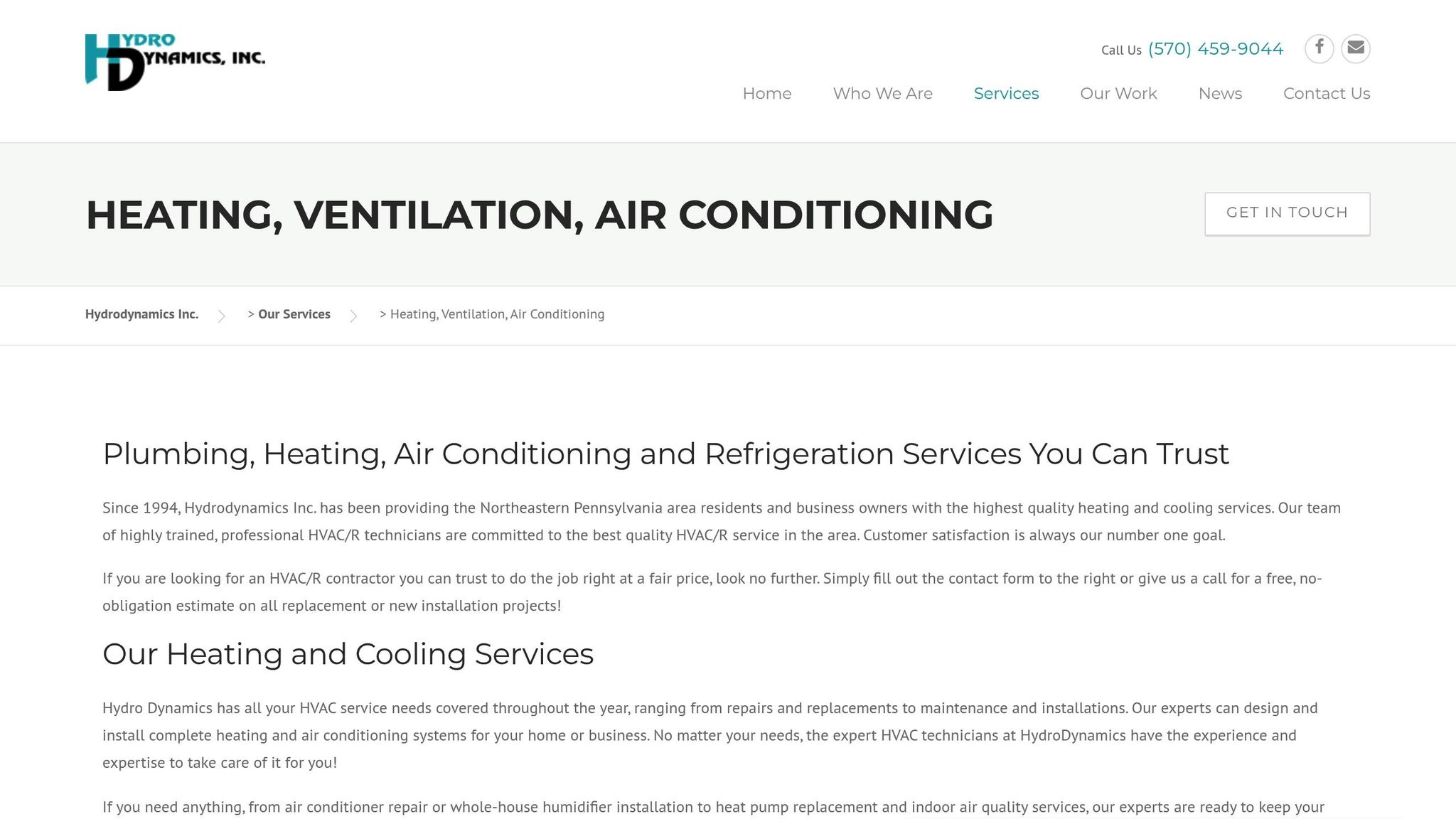
Taking action on your audit’s findings is where the real savings happen. Hydrodynamics, with its decades of experience serving residential, commercial, and industrial clients since 1994, specializes in energy-efficient upgrades that align with audit recommendations.
If your audit highlights HVAC inefficiencies, Hydrodynamics can install solutions like heat pumps, ductless systems, or even geothermal technology tailored to your home’s needs. Their expertise spans both traditional and advanced heating systems, ensuring you get the best fit for your situation.
For heating system issues, Hydrodynamics offers services for gas, propane, and oil systems, as well as modern alternatives. They also provide preventative maintenance to keep your newly optimized systems running smoothly over time.
Whether you’re dealing with rooftop heating and AC systems or specialized industrial equipment, partnering with Hydrodynamics ensures that the energy-saving strategies from your audit translate into measurable results.
Final Thoughts on DIY vs. Professional Energy Audits
Deciding between a DIY energy audit and a professional one often comes down to weighing the upfront cost against potential long-term savings. DIY audits are budget-friendly, typically requiring little more than tools and items you already have at home. However, they might miss hidden inefficiencies that could quietly drain hundreds of dollars from your wallet every year.
On the other hand, professional energy audits involve a higher initial expense, ranging from $100 to $1,650, with an average cost of about $416. While the price tag might seem steep, these audits often pay for themselves within the first year through reduced energy bills. Professional auditors use specialized tools and techniques to uncover inefficiencies that a DIY approach might overlook.
For example, standby power – sometimes called “vampire energy” – can account for around 10% of your electricity bill. Fixing issues like drafts could cut your energy use by 10% to 20% annually. These kinds of targeted fixes not only reduce your energy costs but also make your home more efficient and comfortable.
Another benefit? An energy-efficient home can be a strong selling point, potentially increasing your property’s resale value. Whether you choose to go the DIY route or hire a professional, the most important step is acting on the findings. Over time, the savings from addressing energy inefficiencies often outweigh the initial costs, giving you a solid return on your investment. By taking proactive steps – whether small or substantial – you can ensure your home is running as efficiently as possible.
FAQs
What tools and techniques set DIY energy audits apart from professional ones?
When it comes to DIY energy audits, you’re mostly working with basic tools like a flashlight, a thermometer, and your own sharp observation skills to spot issues. On the other hand, professional energy audits take things to a whole new level with specialized tools. These include blower doors to pinpoint air leaks, infrared cameras that reveal insulation gaps, airflow meters for checking ventilation, and combustion analyzers to evaluate how efficiently your heating system is running. With these advanced gadgets, professionals can dig deeper to uncover hidden energy problems and provide a much more accurate picture of your home’s energy efficiency.
How do government incentives and rebates make professional energy audits more affordable?
Government programs offering incentives and rebates can help cut the upfront costs of professional energy audits, making them more accessible for both homeowners and businesses. These initiatives aim to promote energy efficiency by reducing initial expenses, ultimately helping you save money while conserving energy over time.
Taking advantage of these opportunities not only lowers your initial outlay but also boosts your overall return on investment through potential energy savings and enhanced efficiency. Check out local, state, and federal programs to see what options are available in your area.
Is a DIY energy audit enough for smaller homes, or should you always hire a professional for accurate results?
A DIY energy audit works well for smaller homes when you’re trying to spot straightforward problems like drafty windows or outdated lighting. But if you’re aiming for precise and in-depth insights, bringing in a professional is a smarter move. These experts rely on advanced tools and methods to uncover hidden inefficiencies and provide customized recommendations, setting you up for bigger savings over time.


